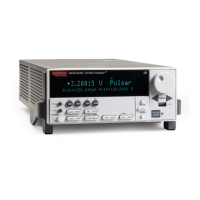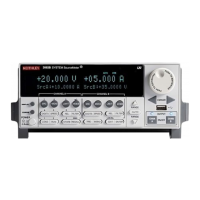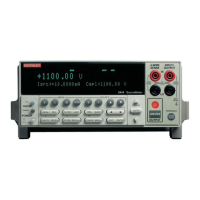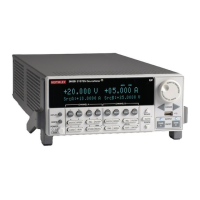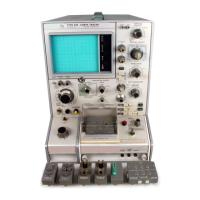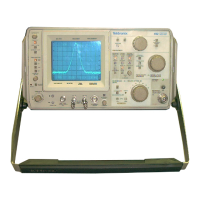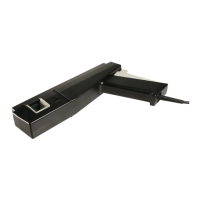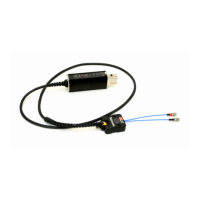Suppression can be enabled for simultaneous C-V measurements by setting the "OffsetCorrect"
parameter to "1" (see line 14 of the SIMCVsweep82 user module (on page 6-42)).
Gain and nonlinearity errors
Gain errors are difficult to quantify. For that reason, gain correction is applied to every measurement.
Gain constants are determined by measuring accurate calibration sources during the cable correction
process.
Nonlinearity is normally more difficult to correct for than are gain or offset errors. The cable correction
provides nonlinearity compensation for high-frequency measurements, even for non-ideal
configurations such as switching matrices.
Voltage-dependent offset
Voltage-dependent offset (curve tilt) is the most difficult to correct error associated with quasistatic
C-V measurements. It can be eliminated by enabling corrected capacitance (LeakageCorrection
parameter set to 1). In this technique, the current flowing in the device is measured as the
capacitance value is measured. The current is known as Q/t because its value is derived from the
slope of the charge integrator waveform. Q/t is used to correct capacitance readings for offsets
caused by shunt resistance and leakage currents.
Care must be taken when using the corrected capacitance feature, however. When the device is in
nonequilibrium, device current adds to any leakage current, with the result that the curve is distorted
in the nonequilibrium region. The solution is to keep the device in equilibrium throughout the sweep
by carefully choosing the delay time.
Noise
You can minimize residual noise on the C-V curve by using filtering when taking your data. The Filter
parameter sets the filter (see line 10 of SIMCVsweep82 user module (on page 6-42)). However, the
filter reduces the sharpness of the curvature in the transition region of the quasistatic curve
depending on the number of points in the region. This change in the curve can cause CQ to dip below
CH, resulting in erroneous DIT calculations. If this situation occurs, turn off the filter or add more
points.
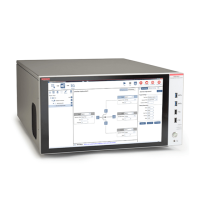
